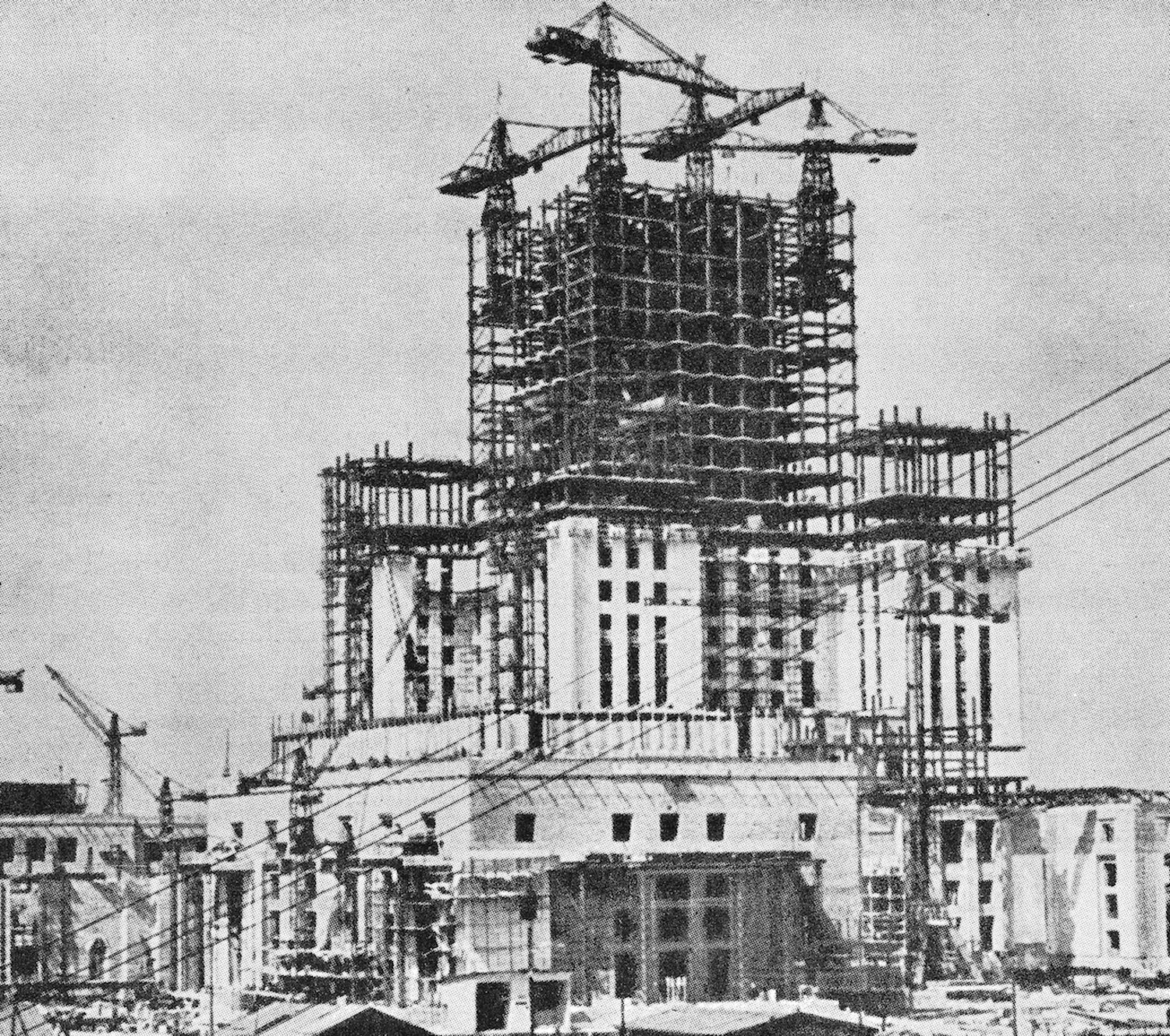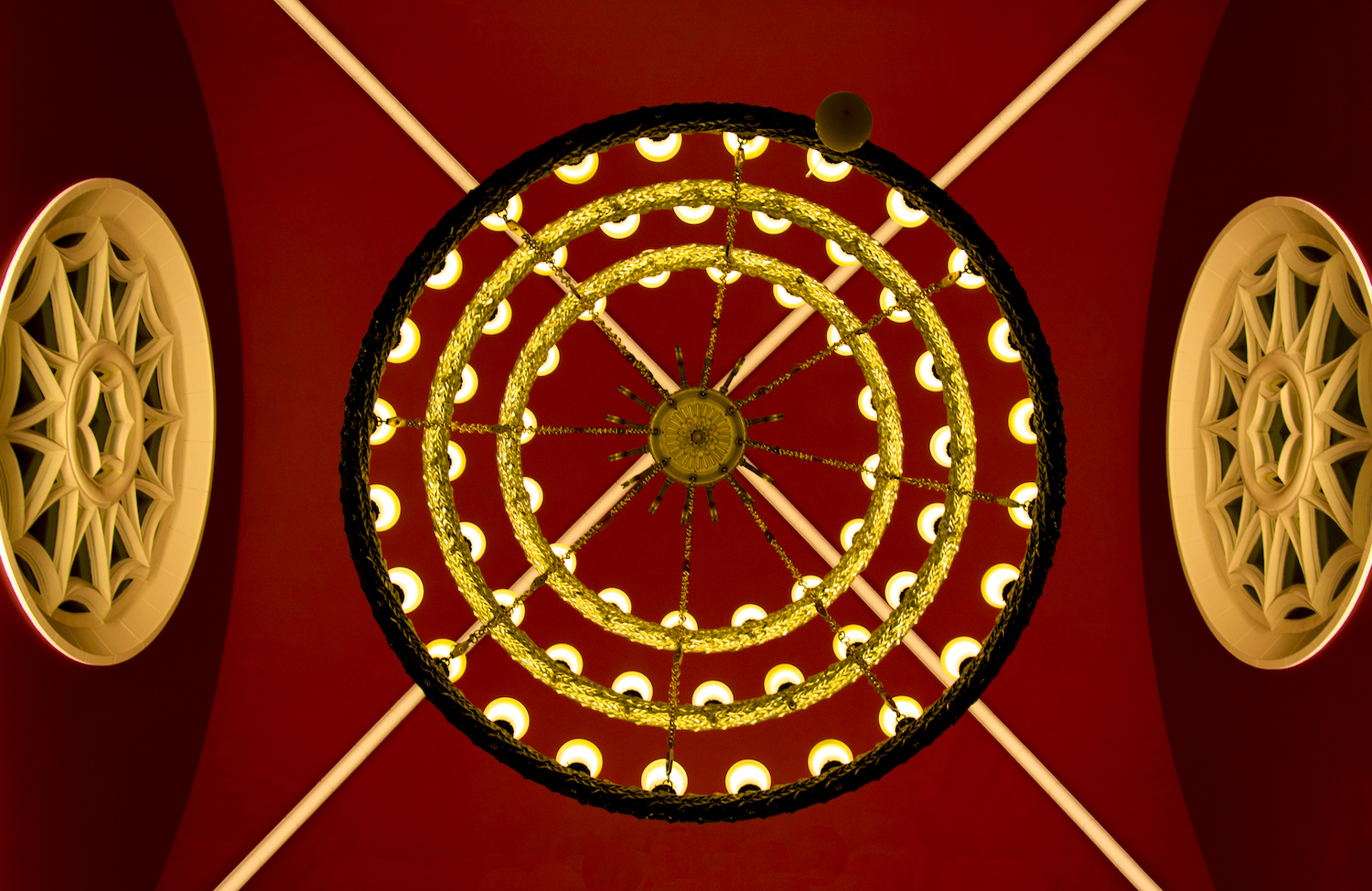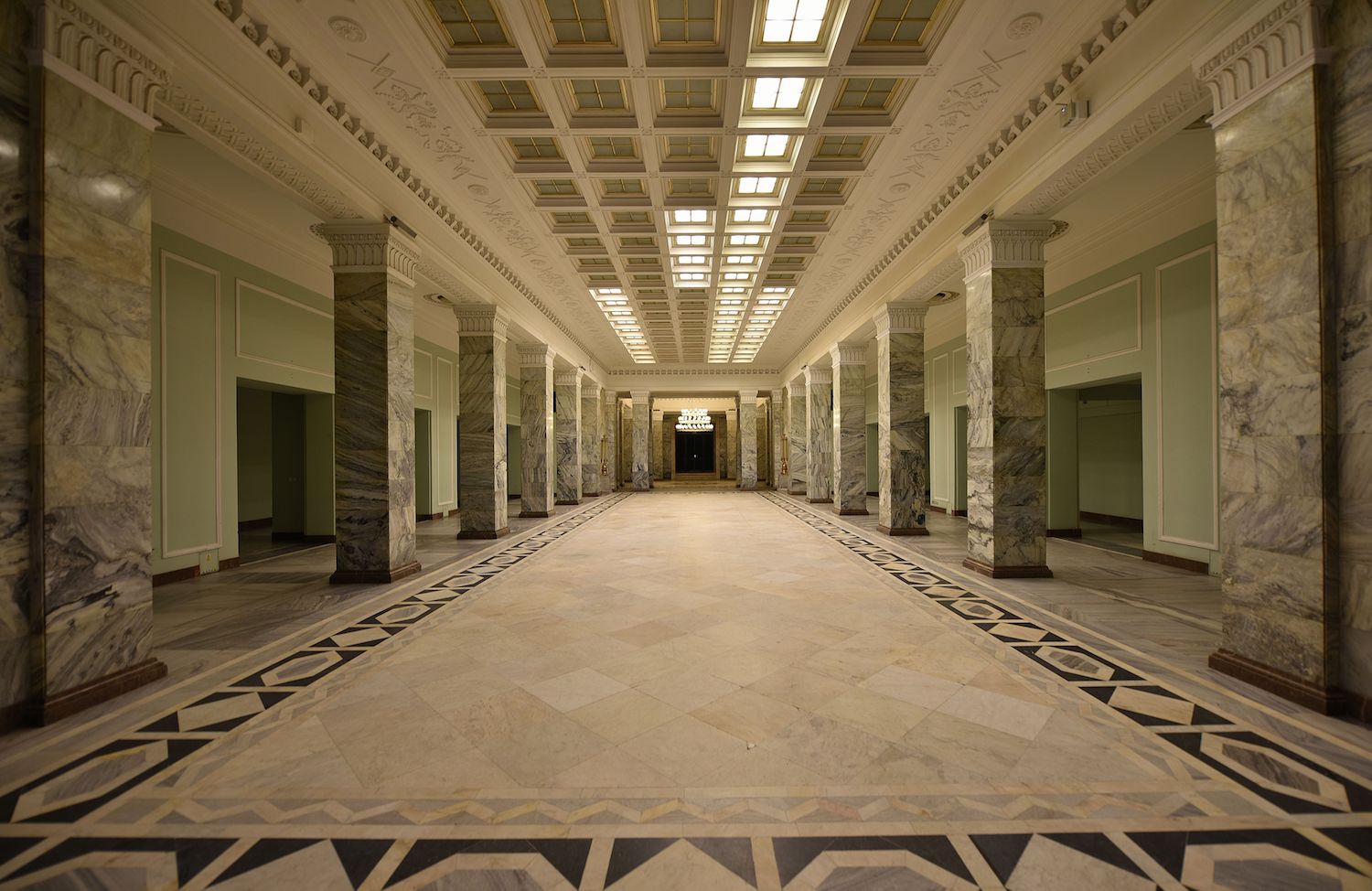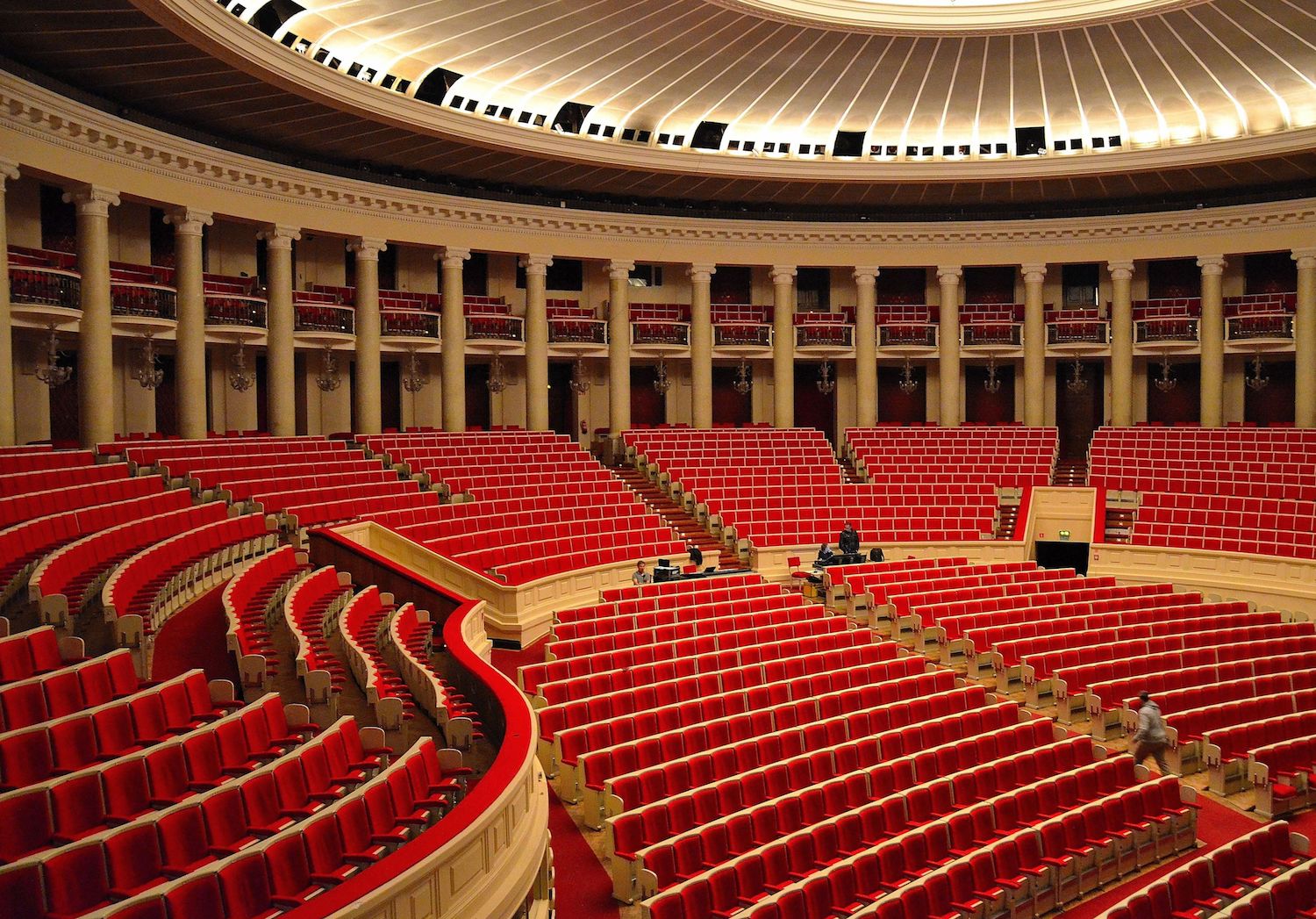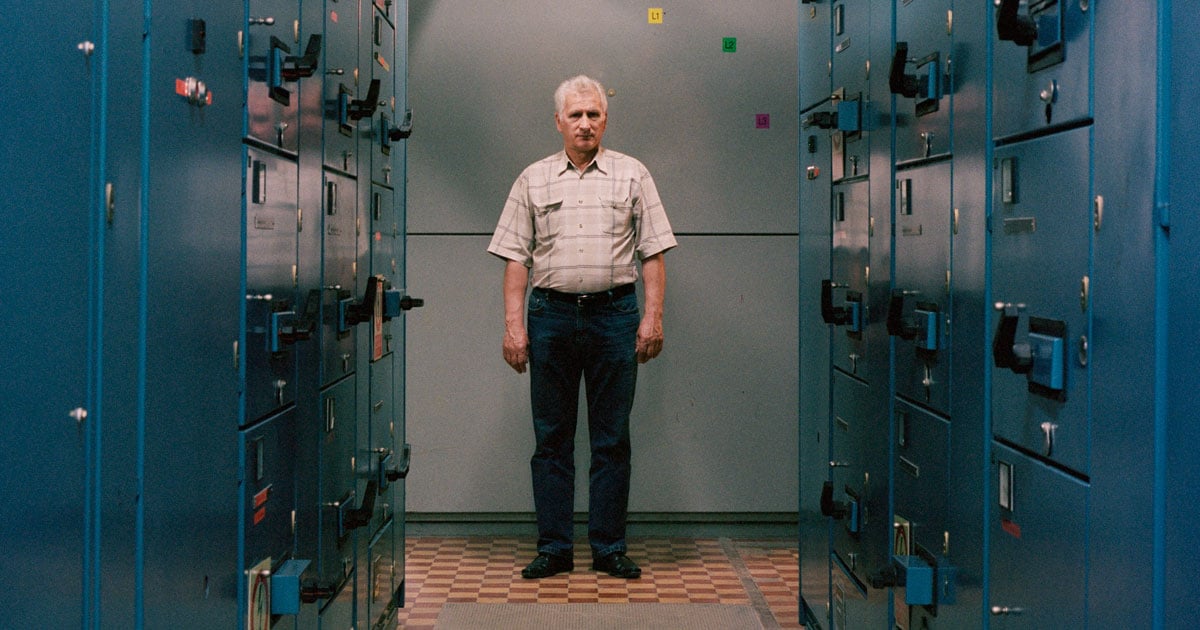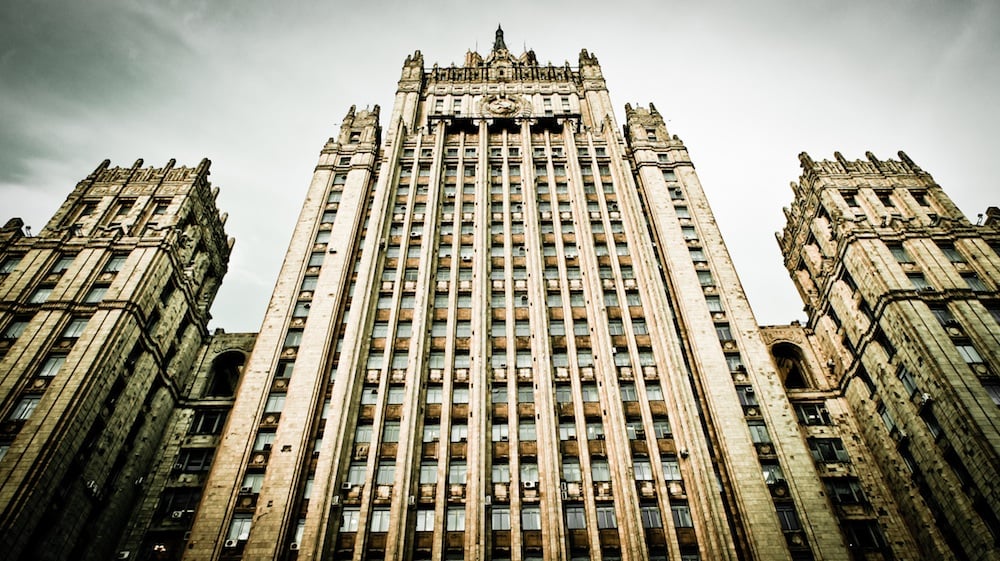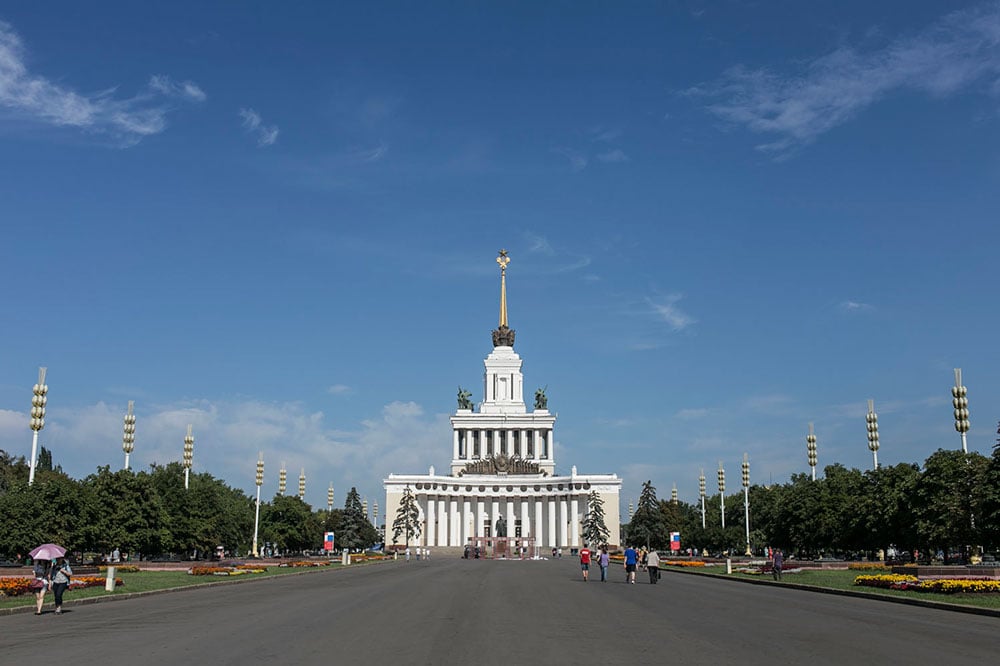Inside Warsaw’s fixation on the Palace of Culture and Science, the socialist skyscraper in a capitalist city
Warsaw’s most iconic building is also one of its most controversial: the Stalinist Palace of Culture and Science, which still dominates debate more than 60 years after its construction. A new book argues that the Palace is an island of socialism in the capitalist metropolis, and a hub of dissent in the face of Poland’s right-wing turn.
Warsaw’s Palace of Culture and Science is one of the most famous buildings in Eastern Europe. The 237-metre skyscraper, a gift to post-war Poland from the Soviet Union, towers over the city in more ways than one. A source of fascination and frustration, it is the object of what some locals call the “palace complex”: a fixation that conditions residents’ relationship to the city to a remarkable degree — for good and ill. “The palace complex is not necessarily a pathology,” says Anglo-Polish anthropologist (and sometime-Calvert Journal contributor) Michał Murawski. “It’s also a source of wonder and a kind of strange and wonderful urban folklore.”
Murawski has spent years researching the Palace and the role it plays in the lives of Varsovians. His new book, The Palace Complex: A Stalinist Skyscraper, Capitalist Warsaw, and a City Transfixed, brings this work together, arguing that the building is an enduring island of publicly-minded socialism amidst the unchecked urban development of the city, a reminder that the concrete achievements of the communist era are not easily dismissed. Repeated efforts to privatise the Palace, to diminish its impact on the skyline by constructing rival skyscrapers, even to demolish it outright, have foundered. The complex is not so readily resolved.
The political context matters here. The hard-right Law and Justice party that has governed Poland since 2015 is determined to expunge any lingering trace of the communist era — even though, until recently, Poland was the only country in the EU without any left-wing representation in parliament. As opposition to their homophobic, racist, and misogynist agenda has become more vocal, the Palace has assumed a new role as a site of protest. I spoke to Murawski about misconceptions surrounding the Palace, and its role in the past and future of Warsaw.
Propaganda posters celebrating the opening of the Palace: ‘Sincere gratitude for the gift of friendship’ and ‘Polish-Soviet friendship is peace, self-determination and the joyful future of our fatherland’
The Palace’s origin story is part of the problem. It was framed as a direct gift from Stalin (although he died two years before construction was completed in 1955), designed by the Soviet architect Lev Rudnev, and largely built with Soviet machinery and labourers. It clearly resembles the “Seven Sisters” skyscrapers in Moscow — the largest of which, Moscow State University, was also a Rudnev design. Despite the incorporation of Polish national elements into the structure — the result of an architectural tour of the country that Rudnev undertook with Warsaw chief architect Józef Sigalin — the Palace is an indelible reminder of a post-war settlement that some Poles consider shameful. In Murawski’s words, “people were more negatively disposed towards it in the communist era because it was a direct expression not only of communism, but more so of Russian domination.”
“The simplified narrative is that people began to appreciate the Palace more after communism no longer existed,” he continues. “And that’s correct to an extent: they were freer to appreciate its myriad public functions, rather than the overwhelming context of Stalinist oppression. In anthropological terms, they were more able to embrace the gift, and less bound by the obligation to reciprocate and pay fealty, once the giver ceased to exist.”
“The things that people identify with, their enjoyment of them, are predicated on the fact that Poland was a socialist regime. And the remarkable thing is their survival in modern Warsaw”
To simply equate the towering Palace with the oppressions of state socialism, however, is far too reductive. It was in no way universally disliked under communism, for one. This Stalinist edifice was the place where regular Poles were most likely to encounter Western culture: The Rolling Stones, Leonard Cohen, and Miles Davis played there; the bookshop of the Polish Academy of Sciences was the best place to buy foreign journals. As Murawski puts it, the Palace “always had this weird, double function.” His research suggests that, counter to popular opinion, it is precisely those Warsaw residents who have strong recollections of communism who are more likely to appreciate the Palace than “young people who have the bizarre, jaded idea that communism was all about Stalinist jackboots.”
“A remarkably large proportion of people in Warsaw, especially people over the age of 35 or so, have an incredibly strong experiential reference to the Palace,” he notes. “If you went up to someone and asked them if they liked the “socialist” nature of the Palace, they wouldn’t necessarily say that was their favourite thing. But they very often express an appreciation for the public functions that the Palace contains.” The building’s concentration of social resources is notable. Among the institutions housed there are The Palace of Youth, with a swimming pool and gym, four theatres, the Congress Hall — used for concerts and Party summits alike under communism — a cinema, two universities, the offices of the City Council, plus extravagantly-furnished halls now rented out for weddings and conferences.
Rather than looming over the city, then, the Palace is integrated into everyday life. “If you ask older people how they feel about the Palace, they mention the time they spent visiting the museums, the time they spent studying there, how they would go on dates on the viewing terrace,” Murawski says. “These public functions are subsidised by either the municipal or the state budget, and the concentration of these functions would have been unthinkable in a non-socialist context. The things that people identify with, their enjoyment of them, are predicated on the fact that Poland was a socialist regime. And the remarkable thing is their survival in modern Warsaw, when many other public institutions have simply ceased to exist or have been rendered elitist or profit-making.”
This is what Murawski hails as the “still-socialist” nature of the Palace, arguably its defining characteristic. He points out that the idea of “post-socialist” Eastern Europe ignores the fact that “a lot of powerful residues of the socialist period which completely transformed those countries continue to exist. The Palace is a socialist ghost or zombie which continues to haunt the reality of the capitalist city. Warsaw is a wild capitalist place: everything’s being privatised, there are huge billboards everywhere, children are being turfed out of their kindergartens so that aristocrats can move back into their stately homes. The Palace is an island exuding a kind of still-socialist publicness over the debris of the discombobulated city.”
No doubt this uncanny, haunting aspect of the building explains in part why the palace complex is so hard to shake — as well as the sometimes-strange ways its manifests itself. Murawski’s book opens with the party thrown by the city in 2015 to celebrate the Palace’s 60th birthday, where a middle-aged woman with a huge Palace tattoo is dancing on a table. Another chapter dips into the thousands of occasionally unhinged letters sent to the Palace over decades, the most intriguing of which were written in 1989 by a woman who claimed that the building’s television aerial was causing her to experience “involuntary orgasms”. The Palace also has a way of popping up in film and television, often the scene of some narrative climax.
The most famous cultural expression of the complex within Poland is in the work of the late writer and director Tadeusz Konwicki, who lived down the road from the building. His 1972 film How Far Away, How Near opens with the image of a Hassidic Jew flying around the Palace’s spire, as if exorcising another of the city’s ghosts — the Warsaw Ghetto, the boundary of which ran through the land where the Palace now stands. Konwicki’s 1979 novel A Minor Apocalypse revolves around a dissident who plans on self-immolating on the steps of the building and who spends the novel wandering around Warsaw looking for matches and a can of petrol.
“Since the Palace has become an object of hatred for our anti-communist, theocratic government, it has been identified with by everyone who considers themselves opposed to the regime”
Konwicki’s bleakly satirical vision was made horribly real in October 2017, when a chemist called Piotr Szczęsny set himself on fire outside the Palace in protest against Law and Justice’s brutal conservative agenda; he died 10 days later. Szczęsny’s death was the most extreme example to date of the Palace’s renewed politicisation since 2015. Law and Justice’s 2016 “de-communisation” law orders all streets, public spaces, and monuments associated with the communist period to be renamed or removed. The Palace, a monolith to state socialism, is a thorn in the government’s side. The national news broadcast had previously used the Palace clock as a backdrop. “When the Catholic theocracy entered power in 2015,” Murawski notes, “one of the first things they did — after sacking all the judges and heads of state-owned media — was replace that backdrop with one of the Royal Castle: completely ignoring the fact that the Royal Castle, which was destroyed by the Germans, was also rebuilt by the communists.”
As Law and Justice’s rule has sharpened political divisions in Poland, the Palace has become “an item of contention”. Before 2015, Murawski says, it was a “fringe” position to express dislike for the Palace: “now, that sentiment is completely mainstream.” (His research suggests that anti-Palace fever is particularly pronounced among young men — a result, he posits, of “a desire to protect the dignity of Mother Poland from the oppressive Stalinist monster-phallus.”) But this has produced a counter-reaction. “Since the Palace has become an object of hatred for our anti-communist, theocratic government, it has been identified with by everyone who considers themselves opposed to the regime.”
“Historically, Poland’s feminist Manifa marches on International Women’s Day have started at the Palace; Pride Parades always pass by it. The recent meetings in solidarity with the Pride Parade in Białystok — which was attacked by a gang of 5,000 fascists — were held outside the Palace. It’s a natural place for these kinds of contestational meetings.” The Palace has also been co-opted by Civic Platform, the neo-Thatcherite liberals who Law and Justice ousted in 2015 and who now constitute the main opposition. “There are these weird machinations going on, where the communist heritage most clearly exemplified by the Palace is being re-appropriated by the liberal powers that be, just because the Palace is so hated by the current government,” Murawski says. Civic Platform control the Warsaw City Assembly (which meets, of course, in the Palace), and have recognised its value as “a municipal symbol. The current Civic Platform mayor, Rafał Trzaskowski, has also appropriated the Palace as a symbol of his personal opposition to Law and Justice.” One of Trzaskowski’s first acts on taking office was to pass an LGBTQ charter for the city.
Murawski sees this liberal embrace of the Palace as part of its “parallel and ongoing hipsterisation”. Several cafes have opened on the premises, and the Palace administration has been forced to raise the rents paid by the public facilities housed there in order to stay afloat. If the social function of the building is under threat, it is not only from the government. “The incorporation of the Palace into liberal discourse is threatening its still-socialist existence much more than the Catholic theocracy can,” Murawski notes.
The Palace’s future as a beacon of public-mindedness in a hostile urban and political environment is far from guaranteed, though it has proven remarkably resilient thus far. Whatever the results of this autumn’s parliamentary elections — where left parties are predicted to gain up to 15 per cent of the vote — it will continue to serve as a lightning rod for Poles’ conflicting emotions about communism and capitalism alike. A more nuanced understanding of the nation’s past is sorely needed; the Palace proves that it is also more honest.
